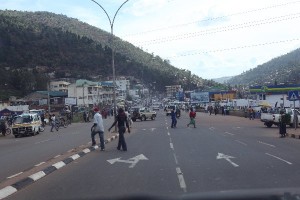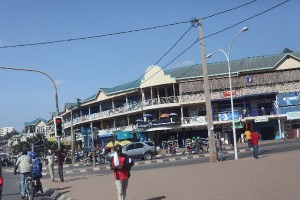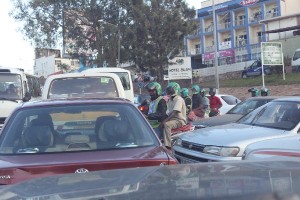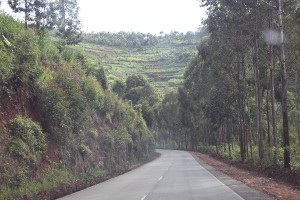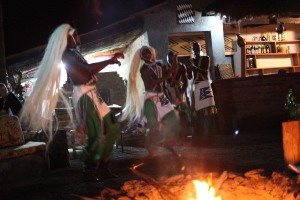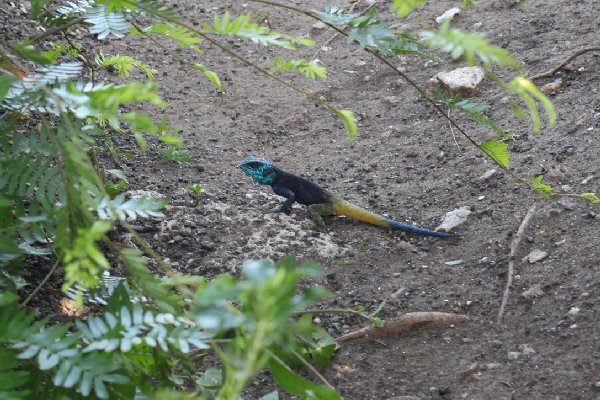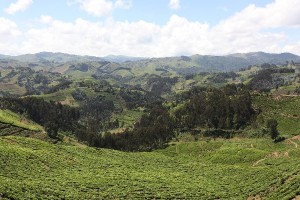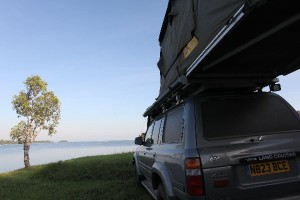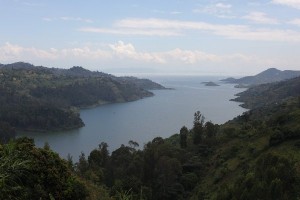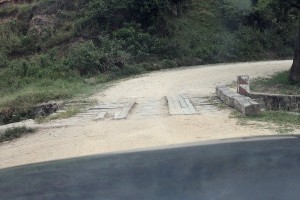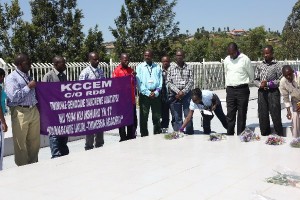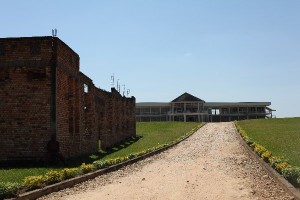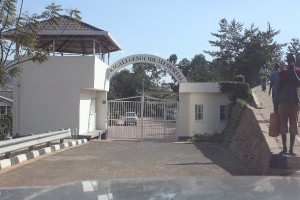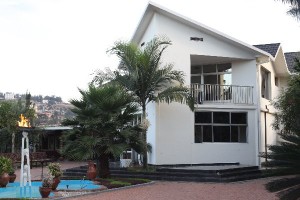Rwanda is the ‘Land of a Thousand Hills’, and our poor car has huffed and puffed its way up a fair number of them! Surely the locals cycling around would fare well in the Tour de France if they were given some decent equipment….
A couple of quirky things about the country – there are no plastic bags in circulation and customs confiscates those that visitors bring in; and everyone has to devote the morning of the last Saturday of the month to community service such as looking after public gardens, repairing walls and clearing the streets of litter. Most offices and shops are closed and cars caught driving around may end up getting asked to deliver rubbish to the local dump! All well and good unless you happen to be in Kigali for only that day and have some admin to do…
Kigali is one of the most modern African cities we’ve been to so far, with cafes, working internet connections and pavements that people actually use. They don’t seem to have quite worked out how to use the many roundabouts that dot the city, but I’m sure that will come in time. Impressive also are the motor bike taxis that include driver and passenger helmets – a rarity in most countries that these taxis exist in. International money and aid organisations are in evidence and construction work is booming, rebuilding a city that took a pounding during the genocide.
After listening to reggae in our tent for much of the night whilst camping in the car park of Rasta-Japanese owned guest house in Kigali (!) we headed to the Lake Kivu and the pretty town of Gisenyi. Except we didn’t quite make it to the lake before dark and ended up in another car park, this time one that was for trucks and taxi buses, and attached to a Presbyterian church… such a glamorous life we lead on the road!
Gisenyi was beautiful when we finally got there and we watched some colourful dancing and even more colourful lizards. The fishermen also provided entertainment, singing as they paddled their three-hulled boats back to shore in the early hours of the morning.
We took the slow, scenic, twisting road along Lake Kivu to Kibuye where we camped right on the water’s edge, and then through Nyungwe Forest to loop back to Kigali. The landscape was incredibly beautiful and lush, with rows of tea bushes arranged across the hillsides. We held our breath several times though as we crossed rickety wooden bridges and hoped they wouldn’t collapse under the weight of our car. Each of the planks seemed to rise up in noisy protest as we passed over them, but miraculously stayed in place.
Whilst people are outwardly friendly and day to day life goes on, you can’t help but think of the atrocities of the 1994 genocide and the broader horrors of Rwanda’s past. We’re glad we visited the genocide memorials towards the end of our time in Rwanda as they make you look at people and the landscape very differently. It was very sobering to sit on the patio of a hotel reading about the roadblocks and killings that had taken place on its very doorstep.
Every year there is a period of mourning and remembrance. We visited the memorial at Murambi whilst a group of office workers were paying their respects. This was the site of a technical college where people had sought refuge. But the Interahamwe (Hutu militia) came and within days 55,000 Tutsi and moderate Hutu adults, children and babies were killed. This was also repeated in many schools and churches which people believed would provide safety. In some of the college rooms at Murambi, hundreds of the bodies have been preserved in powdered lime just as they fell – machete wounds still visible and cries of agony on their faces.
The Kigali Memorial Centre has a fascinating exhibition on Rwanda’s pre-colonial and colonial history, as well as the events leading to the genocide, and the international reaction to it. Especially moving were the video interviews with people, as young as in their 20s, talking about their memories of running and hiding in the hills and of the brutalities they witnessed, often by people who they thought were friends and neighbours.
The International Criminal Tribunal for Rwanda started the process for justice in 1995 and it continues today in the gacaca, local courts led by village elders. It was interesting seeing videos of these taking place in the middle of villages, with the suspects standing in front of their former neighbours.
In the spirit of national unity the president has banished ethnic identities, saying that there are only Rwandans. As an outsider, it’s still difficult to understand how people carry the burden of this recent history, but it is also incredible to see how far the country has come in rebuilding itself.
Err… and no, the title has nothing to do with the post, but it was the best we could come up with!

